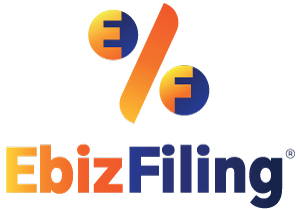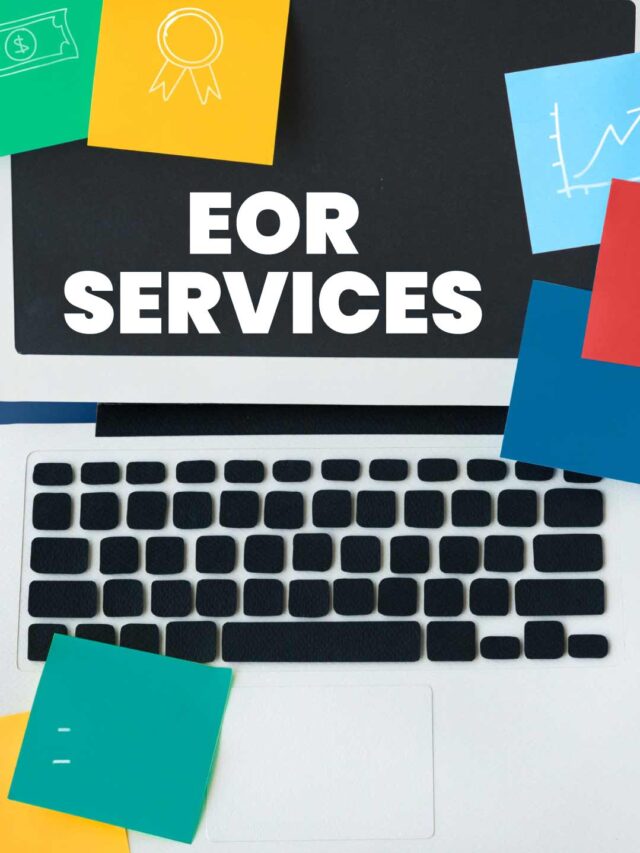
-
October 15, 2025
Consequences of Missing DIR-3 KYC Filing
Introduction
If you’re a company director in India, you must file your DIR-3 KYC every year. This form updates your contact details like your phone number and email with the Ministry of Corporate Affairs (MCA). If you got your Director Identification Number (DIN) before March 31, you have to file this form by September 30 each year. Missing the deadline can deactivate your DIN, which means you can’t legally work as a director. In this blog, we’ll explain what happens if you miss the 2025 deadline, how to file the form, and why it’s important to stay compliant.
Summary
Important Update (MCA Circular No. 04/2025)
The Ministry of Corporate Affairs (MCA) has extended the last date for filing DIR-3 KYC and DIR-3 KYC-WEB for the year 2025.
-
Earlier Due Date: 30th September 2025
-
Revised Due Date: 31st October 2025
-
Note: No late fee will be charged if the forms are filed on or before 31st October 2025.
Please note, this extension is only for the current year (2025). From next year onwards, the due date will continue to be 30th September, unless MCA issues another notification.
What Does “Consequences of Missing DIR-3 KYC Filing” Mean?
It means a company director in India faces trouble if they don’t submit their DIR-3 KYC form to the Ministry of Corporate Affairs (MCA) by the deadline; 30th September 2025.
This form is meant to keep your contact details (like phone number and email) updated with the government. If you forget it, there are penalties; your Director ID (DIN) can get deactivated, and you might not be able to carry out your role as a director until it’s fixed.
What Happens If You Miss DIR-3 KYC Filing?
Missing your DIR-3 KYC might seem like a small thing, but it can cause big problems if you’re a company director. Here’s what can happen:
- Your DIN Will Be Deactivated: If you don’t file on time, the Ministry of Corporate Affairs will deactivate your Director Identification Number (DIN). This means you won’t be legally recognized as a director anymore and can’t sign official documents or file forms with the Registrar of Companies (ROC).
- You Can’t Get Appointed or Resign: With a deactivated DIN, you can’t become a director in any new company as well as you won’t be able to officially resign from any companies where you’re already a director.
- You’ll Have to Pay a ₹5,000 Late Fee: To get your DIN reactivated, you must file the DIR-3 KYC form even after the deadline and pay a ₹5,000 penalty. This fee is non-refundable, no matter how late you file.
- Your Company’s Compliance Could Suffer: If your DIN is inactive, your company may face delays in submitting important documents like annual returns and financial reports.
- You Risk Being Disqualified Over Time: If you keep missing this filing year after year, you could be disqualified as a director under the Companies Act, which can harm your career.
Benefits of Filing DIR-3 KYC on Time
- Keep Your DIN Active: Keeping your DIN active helps you avoid compliance problems and penalties.
- Stay in Control of Your Directorship: You can easily take on new director roles or resign from current ones without any issues.
- Help Your Company Stay Compliant: An active DIN means your company can file all necessary documents on time without delays.
- Build a Strong Reputation: Being compliant improves your credibility with banks, business partners, and government bodies.
- Save Money and Avoid Trouble: If you file on time you won’t have to pay the ₹5,000 late fee or get disqualified as a director.
How to File DIR-3 KYC
For First-Time Filers (Full DIR-3 KYC Form):
Step 1: Get Your Digital Signature Certificate (DSC): You’ll need a DSC to sign your KYC form online.
Step 2: Gather Your Documents: Prepare self-attested copies of PAN card, Aadhar card or Passport, permanent address proof, and keep mobile number and email ready for OTP verification.
Step 3: Log In to the MCA Portal: Visit the MCA V3 portal to start the filing process.
Step 4: Download and Fill Out the DIR-3 KYC Form: Carefully fill in the form with your details.
Step 5: Get the Form Certified: You should take the help of a practicing Chartered Accountant (CA), Company Secretary (CS), or Cost Accountant to check and certify your form.
Step 6: Upload the Form Using Your DSC: Submit the certified form on the MCA portal by signing it digitally.
Step 7: Verify with OTPs: Confirm your submission by entering the OTPs sent to your registered mobile number and email.
For Repeat Filers (Using DIR-3 KYC Web):
Step 1: Log In to the MCA Portal: Access the MCA V3 portal.
Step 2: Choose the DIR-3 KYC Web Option: Select the simplified web-based filing.
Step 3: Verify Your Details Using OTPs: You’ll receive OTPs on your registered mobile and email; enter these to confirm.
Step 4: Submit Your KYC: Complete the process online. There’s no fee if you file before the deadline.
Impact on Companies
- Compliance Gets Delayed: When directors miss their DIR-3 KYC, the company might struggle to file important annual returns like MGT-7 and AOC-4 on time.
- ROC Filings Hit a Roadblock: If a director’s DIN is deactivated, they can’t sign or submit company forms with the Registrar of Companies, causing delays.
- Board Work Slows Down: With inactive directors, the board may face delays in making key decisions, affecting the company’s daily operations.
- Higher Risk of Regulatory Scrutiny: Governance issues due to inactive directors can attract unwanted attention from authorities, increasing the chance of inspections or penalties.
What to Do After Filing DIR-3 KYC
- File Every Year: You need to complete this KYC filing every year to stay on the right side of the rules.
- Keep Your Contact Details Updated: If your phone number or email changes, make sure to update them quickly by filing the new details with the MCA.
- Keep Your Documents Safe: Save copies of your DIR-3 KYC acknowledgment, the filled form, and OTP confirmation for your records.
- Check Your DIN Status: After your KYC is accepted, your DIN will show as “Active” on the MCA portal. Keep an eye on this to confirm everything is in order.
Limitations and Challenges of Filing DIR-3 KYC
- Strict OTP Verification: You need to verify your mobile number and email using OTPs. If your contact information is old or you can’t access it, the filing won’t go through.
- No surrender on Late Fees: If you miss the deadline, you’ll have to pay a ₹5,000 penalty; there’s no way around this fee.
- Technical Issues on MCA Portal: Near the deadline, the MCA website can get very busy, causing slowdowns or even delays in submitting your form.
- Professional Certification Needed for First-Time Filers: If it’s your first time filing, you must get your form certified by a practising CA, CS, or Cost Accountant.
- Annual Filing is Mandatory: You have to file this KYC every year, even if your details haven’t changed.
DIR-3 KYC Filing Overview
| What You Need to Know | Details |
|---|---|
| Who Needs to File? | Anyone holding a DIN as of March 31, 2025 |
| When Is It Due? | By September 30, 2025 |
| How to File? | Use the full DIR-3 KYC form if it’s your first time, or the simpler KYC-Web option for repeat filings |
| Filing Fee if On Time | No fee at all |
| Fee If You File Late | ₹5,000 penalty applies |
| Where to File? | On the MCA V3 portal, with OTP verification sent to your registered mobile number and email |
Conclusion
Missing the DIR-3 KYC filing can cause big headaches; not just for you as a director, but also for the companies you’re involved with. It can lead to legal troubles, financial penalties, and delays in important company work. To avoid all this, make sure you file your KYC on time and keep your details up to date. The good news is, it’s a simple process and completely free if you do it before the deadline. Staying on top of this small task helps keep things running smoothly and protects your position as a director.
Suggested Read :
Importance of DIR – 3 KYC For directors
A Complete Guide on DIR-3 KYC For LLP Partners
Difference Between Executive and Non-executive Director
Compliance Calendar for Pvt Ltd Company 2025-26
List of MCA Forms for ROC filing
FAQs
Who needs to file DIR-3 KYC?
All directors must file as of March 31, 2025, who have a DIN.
When is the last date to file DIR-3 KYC in 2025?
The last date to file DIR-3 KYC is September 30, 2025.
Do I have to pay a fee if I file on time?
No, there’s no fee if you file on time.
What happens if I miss the deadline?
If you miss the deadline, your DIN will be deactivated, and you’ll have to pay a ₹5,000 late fee to reactivate it.
Can I get my DIN reactivated after deactivation?
Yes, you can reactivate it by filing the DIR-3 KYC by paying the penalty.
What documents do I need for the first-time filing?
You’ll need self-verified copies of your PAN, Aadhar or Passport, and proof of address.
Is a Digital Signature Certificate (DSC) required?
Yes, if it’s your first time filing, DSC is required.
How do repeat filers submit DIR-3 KYC?
If you’ve filed before, you can use the easier online DIR-3 KYC Web process.
Can I update my phone number or email while filing?
Yes, you can update your contact details during the filing.
Do I need to file DIR-3 KYC every year?
Yes, it’s an annual requirement for all directors.
File DIR-3 KYC
Get your DIR-3 KYC filed on time with Ebizfiling’s expert support.
About Ebizfiling -










December 18, 2025 By Dhruvi
Essential compliance knowledge every startup coach should know Introduction Startup coaches and mentors play a powerful role in a founder’s journey. Founders trust them for direction, validation, and early decisions. In many cases, a coach’s advice shapes how a startup […]
December 18, 2025 By Steffy A
OIDAR and Foreign Startups: Fixing India’s Compliance Fear Introduction OIDAR rules play a major role in how foreign startups enter India’s fast-growing digital economy. From SaaS platforms and online tools to streaming and app-based services, India closely tracks how digital […]
December 15, 2025 By Steffy A
Compliance Calendar in the Month of January 2026 Introduction As January 2026 begins, businesses, professionals, and taxpayers must prepare for multiple statutory compliance deadlines. This month includes important monthly and quarterly filings under GST, PF, ESI, and Income Tax laws. […]